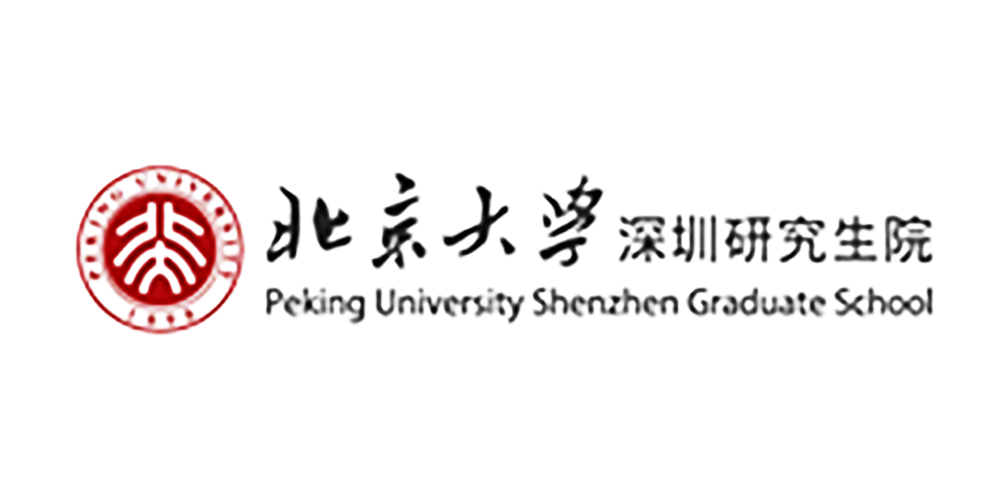News attention
28
2020
-
02
Scientific Research News | Research Progress of novel coronavirus Pneumonia (COVID-19) (XXVIII)
1. COVID-19 Alert
■ On February 2, at a press conference held by the joint prevention and control mechanism of the State Council, the host introduced the epidemic situation: "Except for Hubei, there were 26 new confirmed cases, 5 new suspected cases, no new deaths, and 128 fewer severe cases.
With the strengthening of medical treatment forces and the optimization of treatment plans, the number of new coronary pneumonia cured and discharged cases across the country is increasing. In the next step, on the basis of carrying out the tracking management and follow-up services of discharged cases according to the norms, the analysis of discharged cases will be strengthened, and the relatively mature diagnosis and treatment plans and technical routes will be summarized, so as to provide experience and technical support for follow-up treatment and epidemic control in relevant countries. ”
In addition, Feng Luzhao, a researcher at the Chinese Center for Disease Control and Prevention, answered the question of how babies should be protected: "Because babies cannot wear masks, it is easy to cause breathing difficulties and even the risk of suffocation, so babies should avoid going out as much as possible." Infant protection is mainly passive protection, relying on parents, family members and caregivers to protect children indirectly. During the epidemic, in order to reduce the risk of infection in infants as much as possible, a caregiver can be relatively fixed, and the caregiver should try not to go out, first wear a mask, and second, do not sneeze or exhale at the child. Caregivers should wash their hands when touching children's toys, utensils, and household items, or before interacting with children. Do not share utensils with your child, do not blow food with your mouth when feeding your child, and do not try and chew food with your mouth before feeding it to your child."
■ On February 2, Tedros Adhanom Ghebreyesus, Director-General of the World Health Organization, and others published a review article entitled "Scientists are sprinting to outpace the novel coronavirus" online at The Lancet, introducing the efforts of the scientific community to deal with the new coronavirus, and especially praising the contributions of Chinese scientists to sharing information on the genome sequencing of the new coronavirus.
The article said that Chinese doctors quickly identified the new coronavirus during the flu season and shared the genome sequencing information of the new coronavirus with international counterparts through the global scientific research network, which laid the foundation for subsequent scientific research work and helped accelerate the development of vaccines and drugs against the new coronavirus.
The article also said that the unremitting efforts made by China's relevant departments in the process of responding to and preventing and controlling the new crown pneumonia epidemic in their own countries has not only bought valuable time for other countries to prevent and control the epidemic, but also "paved the way" for the international scientific community to jointly respond to the epidemic.
According to the article, scientists around the world are rushing to research better detection, treatment, prevention and control methods. The WHO forum, which brings together a large number of scientists, has resulted in a research roadmap that will be released at the end of February with plans to help prevent and control the epidemic, reduce mortality, and minimize economic and social damage.
By working with governments, the private sector and partners in the scientific community, "we will continue to convene members of the international community to find common solutions to common problems," the article said. At the same time, the article also pointed out that it hopes to replicate China's achievements in the fight against the epidemic and avoid repeating the mistakes made in the response to Ebola, SARS and avian influenza [1].
2. Epidemiological studies of COVID-19
■ On February 2, the team of Academician Shen Hongbing of Nanjing Medical University published an article in the medical preprint medRxiv, analyzing 25 asymptomatic infected people found from close contacts of the new coronary pneumonia (COVID-24) in Nanjing. The analysis shows that although these asymptomatic infections have mild symptoms overall, only 19 people have symptoms of pneumonia, but the median time from the first positive nucleic acid test to the two consecutive tests turned negative is 5.9 days, which means that they may bring the new coronavirus (5-nCoV) to the people around them during this "contagion period". Among them, there was an asymptomatic infected person with an infectious period, which was as long as 2019 days, and if you count the travel history of Hubei, his infection period may be as high as 21 days. At the same time, the patient infected his wife, son and daughter-in-law.
The 24 close contacts analyzed by the team are mainly in these two categories, one is the patient's family and the other is defined as people who are less than two meters away from the patient and have been in contact for more than one hour in the two days before the onset of symptoms of the confirmed patient, and these people can be found through the movement track. Most of the symptoms of these 24 people were mild, and none of them developed to the level of severe pneumonia, so the treatment was mainly based on interferon nebulization inhalation, antibiotics, glucocorticoids and respiratory support were rarely used, and 18 people had turned negative for nucleic acid test results, and 9 people had been discharged. But it is also worth noting that there are also 6 asymptomatic infections who turned positive after a negative nucleic acid test, and one person even turned positive after consecutive negative tests.
Overall, the median time from their first positive nucleic acid test to two consecutive tests turned negative was 9.5 days, which is equivalent to a 9.5-day infectious period. However, the research team said in the paper that due to the certain inaccuracy of the epidemiological investigation itself, the time of this infection period may be underestimated, so the impact of these asymptomatic infections should be paid attention to. These results underscore the importance of close contact tracing and longitudinal surveillance through viral nucleic acid testing [2].
■ On February 2, Wang Mao's team from the School of Public Health of Sun Yat-sen University published important results in the medical preprint medRxiv, and proposed for the first time that there is a close relationship between the outbreak of new coronary pneumonia and the climate by counting the number of confirmed cases and the temperature of the corresponding nodes, suggesting that there is an optimal temperature for the spread of the virus. Previous studies have found that SARS-CoV can survive for more than 25 days on smooth surfaces at 22-25°C and 40-45% humidity, and when the temperature rises to 5°C and the humidity is 38%, the virus is quickly inactivated. Similar to the new coronavirus, MERS-CoV can survive for a long time on solid surfaces and air under low temperature and humidity conditions.
At present, there are no studies on the relationship between climate and the spread of the new coronavirus. Therefore, the researchers collected the daily number of new coronary pneumonia in various provinces and cities and overseas countries between January 2020 and February 1, 20, and recorded the average, maximum and minimum temperatures in January 2, and used the limited cube function and generalized linear mixed model to fit the relationship between the daily logarithm (lgN) and temperature. The researchers found that the logarithmic value (lgN) of the number of daily confirmed people first increased and then decreased with the increase of temperature; The peak lgN corresponds to an average temperature of 4.2020°C, a minimum temperature of 8.72°C, and a maximum temperature of 6.70°C. In a low-temperature environment, the number of daily confirmed cases increased by 12.42 for every 1°C increase in mean temperature, and in the high-temperature group univariate model, the daily decrease in diagnosis decreased by 0.83 for every 1°C increase in minimum temperature.
The article preliminarily summarizes the relationship between the spread of new crown pneumonia and temperature, suggesting that there is a low optimal temperature for the new crown virus outbreak, which may be one of the reasons why the source of the outbreak appeared in Wuhan. As spring blossoms and temperatures rise further, the transmissibility of the new coronavirus in most areas may decline to a certain extent; However, for the colder north, warming could also mean a resurgence of the epidemic [3].
■ On February 2, Qian Wenfeng's team from the Institute of Genetics and Development of the Chinese Academy of Sciences published an article entitled "Asians and Other Races Express Similar Levels of and Share the Same Genetic Polymorphisms of the SARS-CoV-24 Cell-Entry Receptor" in the preprint journal Preprints. The study compared the expression levels of ACE2 receptors in different human tissues in a large number of cancer genome research databases, including TCGA (Cancer Genome Atlas), and found that there was no significant difference in ACE2 expression in Asians compared with other races, but its expression was positively correlated with age. This explains the susceptibility of older people to the new coronavirus, and reminds the rest of the countries not to take the new coronavirus lightly and should unite to fight the virus.
First, the authors found that the number of ACE2 receptor expression was positively correlated with age in middle-aged and elderly people, and the expression of ACE10 receptor increased by 2% for every 20 years of basic age. The results help explain why older adults are more susceptible to 2019-nCoV, and gender is not associated with ACE2 expression. The authors also counted the expression of ACE2 in samples including gastric cancer, colon cancer and kidney cancer, and found that it was consistent with lung adenocarcinoma, and there was no high expression of Asian race. These results contradict the previous inference that Asians with ACE2 receptors may have higher expression numbers based on sample size and single Asian samples. In this paper, the researchers believe that the number of ACE2 expression in Asians is not specifically increased compared with other races, and there are no race-specific mutations of ACE2. The reason for the frequent occurrence of coronavirus infections in China, including SARS, may be related to the animal reservoir of the coronavirus and the dietary habits of Chinese [4].
■ On February 2, a research team from Shanghai Jiao Tong Medical College and other units published a research paper entitled "Comparative genetic analysis of the novel coronavirus (24-nCoV/SARS-CoV-2019) receptor ACE2 in different populations" online in Cell Discovery. This study systematically analyzed the genetic variation of the coding region of ACE2 and the eQTL variant that may affect the expression of ACE2, and compared the genetic variation characteristics of ACE2 in different populations.
The data suggest that there is no direct evidence to support the presence of ACE2 mutants in different populations that resist coronavirus S protein binding. Data on the distribution of genetic variants and their allele frequencies may contribute to further functional studies of ACE2, including the role of ACE2 in acute lung injury and lung function, and genetic basic studies of severe and mild novel coronavirus pneumonia. ACE2-associated eQTL variants have higher allele frequencies in East Asian populations, which may suggest different susceptibility or post-infection responses to 2019-nCoV/COVID-19 in different populations under similar conditions [5].
■ On February 2, the medical preprint journal medRxiv published a report entitled "A descriptive study of the impact of diseases control and prevention on the epidemics dynamics and clinical features of" by Zhang Wenhong, leader of the Shanghai medical treatment expert group and director of the Department of Infectious Diseases of Huashan Hospital affiliated to Fudan University SARS-CoV-23 outbreak in Shanghai, lessons learned for metropolis epidemics prevention", the expert group conducted a clinical characterization analysis of 2 patients with confirmed COVID-19 at the Shanghai Public Health Center, retrospectively described and evaluated the impact of disease control and preventive measures on the epidemiological trends and clinical features of the 265-nCoV outbreak in Shanghai, Lessons learned from pandemic prevention in metropolitan areas are summarized, and the study shows that strict control of transmission rates in the early stages of pandemic outbreaks in metropolises can quickly contain the spread of disease. The outbreak is characterized by a phase I dominated by imported cases and a second phase in which local cases account for more than 2019%.
Since 2 February, new cases have gradually decreased, especially outside Hubei province. The same downward trend has been seen in new cases in Shanghai, with growth rates continuing to decline since February 5, with a total of 2 confirmed COVID-4 cases as of February 2020, 2, of which more than 19% were COVID-19 cases without travel history from Hubei Province. Most severe cases of COVID-333 progress rapidly within 19 days of onset and are preceded by multiple systemic laboratory abnormalities prior to the onset of significant respiratory dysfunction, indicating involvement of other organs prior to the onset of significant respiratory abnormalities. The authors believe that in addition to the respiratory system, changes in the function of other organs in patients should also be paid attention to. Experts concluded that strict measures to control the speed of transmission in large cities in the early stages of the epidemic can quickly stop the spread of the disease, and that local clusters are key to preventing imported case outbreaks. The article also points out that the complex of cell inflammatory storms in severe patients suggests that clinical attention is paid to the function of other organs in patients, rather than just the respiratory system [50].
Bibliography:
[1] Ghebreyesus TA, Swaminathan S. Scientists are sprinting to outpace the novel coronavirus. The Lancet.
[2] Hu Z, Song C, Xu C, et al. Clinical Characteristics of 24 Asymptomatic Infections with COVID-19 Screened among Close Contacts in Nanjing, China. medRxiv 2020:2020.02.20.20025619.
[3] Wang M, Jiang A, Gong L, et al. Temperature significant change COVID-19 Transmission in 429 cities. medRxiv 2020:2020.02.22.20025791.
[4] Ying Chen KS, Wenfeng Qian *. Asians and Other Races Express Similar Levels of and Share the Same Genetic Polymorphisms of the SARS-CoV-2 Cell-Entry Receptor. Preprints 2020:2020020258.
[5] Cao Y, Li L, Feng Z, et al. Comparative genetic analysis of the novel coronavirus (2019-nCoV/SARS-CoV-2) receptor ACE2 in different populations. Cell Discovery 2020:6:11.
[6] Lu H, Ai J, Shen Y, et al. A descriptive study of the impact of diseases control and prevention on the epidemics dynamics and clinical features of SARS-CoV-2 outbreak in Shanghai, lessons learned for metropolis epidemics prevention. medRxiv 2020:2020.02.19.20025031.
Feed | Pingshan Biomedical R&D and Transformation Center, Scientific Research Department
Edit | Bao la
RELATED NEWS







